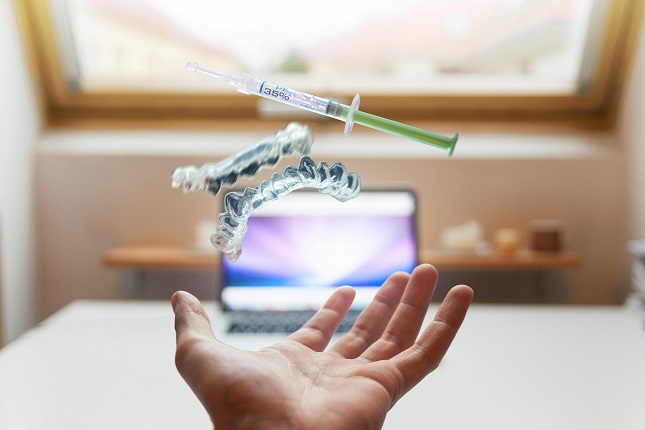Ever left a doctor’s office more confused than when you walked in? You’re not alone. For decades, healthcare has been something most people only thought about when something went wrong. You got sick, you went in, you waited, you left with a stack of papers and maybe a prescription—or more questions.
But something’s changing.
Technology is now shaping our health in ways that go beyond the occasional telehealth call or text reminder. Today, tools that were once considered futuristic—real-time tracking, predictive alerts, virtual consultations—are becoming part of our normal routine. The shift is no longer about convenience alone. It’s about giving people more control, better access, and less stress around their care.
From patients managing chronic illnesses to doctors making faster decisions, digital tools are transforming the whole healthcare experience. And the effects are showing up in daily life—quietly, but powerfully.
In this blog, we will share how digital technology is changing the way we approach everyday healthcare, what trends are shaping this shift, and where it’s all headed.
The New Normal of Tech in Healthcare
Think about how often your phone buzzes with a health reminder. Maybe it’s a fitness tracker telling you to move. Maybe it’s your pharmacy reminding you to refill a prescription. These small nudges, powered by tech, have changed how we think about wellness. Health is no longer something managed once a year during a checkup. It’s a day-by-day habit—and one that’s increasingly tech-driven.
Healthcare providers are adjusting too. With the pressure to improve outcomes while managing costs, doctors are turning to systems that help them stay connected between visits. That’s where tools like RPM software come in. RPM stands for Remote Patient Monitoring. It lets healthcare teams track vital signs like blood pressure, blood sugar, and weight from afar, in real time.
Instead of waiting for a problem to get worse, clinicians can step in early. For patients, this means more support without more appointments. And with platforms becoming smarter and more secure, the data isn’t just collected—it’s actually useful. It’s sorted, flagged, and turned into insights that guide better care.
This shift is especially important for people with chronic conditions. Diabetes, heart disease, obesity—these aren’t illnesses that can be managed in ten-minute office visits. They need long-term attention.
Why the Tech Boom Isn’t Just a Pandemic Blip
COVID-19 didn’t invent digital health—but it absolutely shoved it into the spotlight. Virtual visits, once rare and awkward, became the norm. Patients who had never used a patient portal suddenly knew how to schedule visits online, upload insurance, and read lab results from their couch.
The pandemic showed us what healthcare could look like when convenience met necessity. But what’s interesting now is how much of that change stuck. Virtual care didn’t fade when the waiting rooms reopened. Instead, patients started expecting more of it. Faster communication. Easier access. Clearer follow-ups.
That shift in expectation is part of a larger trend. People are used to tech improving their everyday lives. You can track your pizza delivery to the block. So why not your blood pressure? Why shouldn’t your doctor know about a concerning symptom before it turns into an emergency?
Technology is making this level of care possible—and people are noticing.
From Buzzwords to Real Benefits
Terms like telehealth, digital health, and connected care used to sound like buzzwords. Now, they’re practical tools. The difference lies in how these tools are used.
Take smartwatches. At first, they were fun gadgets for counting steps. Now, they’re monitoring heart rhythm and detecting irregularities. Some even flag potential emergencies, like falls or changes in oxygen levels. In many cases, these early warnings lead to earlier interventions—and better outcomes.
Even medication management has changed. Apps remind you when to take pills. Digital pill bottles log when doses are missed. And that information can be shared with providers or caregivers. It’s simple, but incredibly effective.
In hospitals and clinics, artificial intelligence is being used to sort patient files, flag critical test results, and predict which patients are at higher risk. It’s not about replacing doctors. It’s about giving them better tools to make decisions faster and more accurately.
The Data Dilemma—and the Solution
Of course, with more data comes more responsibility. Privacy is a real concern. Patients want to know their health info won’t end up in the wrong hands—or misused by insurance companies.
That’s why secure platforms are key. Leading tools use encryption, multi-factor authentication, and compliance with HIPAA standards. The goal is to build systems that patients can trust, not just tolerate.
When done right, data can be a powerful ally. It helps doctors see patterns, make adjustments, and personalise care. And for patients, it creates a clearer picture of their own health—without needing to wait for lab results or rely on memory.
Making Healthcare Feel Less Like a Chore
At its best, digital healthcare makes care feel less like a task and more like a natural part of life. A good app doesn’t just track steps. It reminds you to breathe, drink water, and get up when you’ve been sitting too long.
These micro-moments matter. They build awareness. And over time, they help people stay healthier without needing to overhaul their lives.
We’re also seeing a shift in tone. Health tech isn’t just for emergencies or chronic conditions. It’s for prevention. For catching signs early. For feeling a little more in control of your body and your time.
This matters in a world where stress, burnout, and uncertainty are high. If a simple device or smart reminder can prevent a hospital visit or reduce anxiety, that’s a win.
Where We Go From Here
The future of healthcare will likely be even more digital. Wearables will get smarter. Home devices will be more common. AI will become more integrated into diagnostics and decision-making.
But the goal isn’t more gadgets. It’s better outcomes.
The technology that sticks around will be the kind that makes life easier—not more complicated. It will support patients and empower providers. It will reduce gaps in care instead of adding more noise.
There’s still work to do. Access remains an issue, especially in rural areas. Not everyone is tech-savvy. And trust takes time to build. But the trend is clear. Digital tools are no longer the exception. They’re the baseline.
Final Thoughts: It’s About Time
Technology didn’t solve healthcare. But it’s making it a lot more manageable.
From real-time monitoring to smart alerts and secure data sharing, digital tools are helping people care for their health in ways that feel modern, flexible, and real. They’re not perfect. But they’re moving us forward.
Because when your watch reminds you to breathe, your doctor sees your vitals without waiting for an appointment, and your medication shows up before you even remember you needed it—that’s not science fiction.
That’s progress. And it’s about time.










































